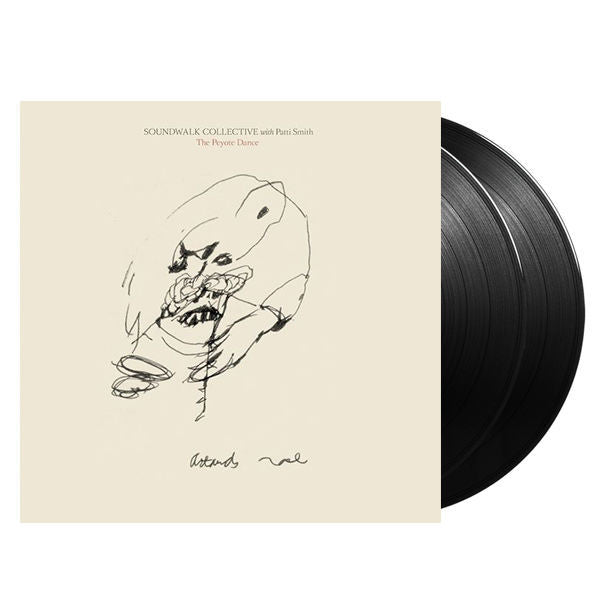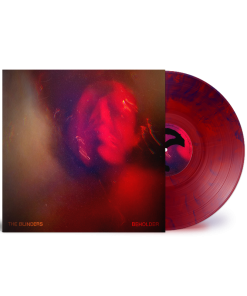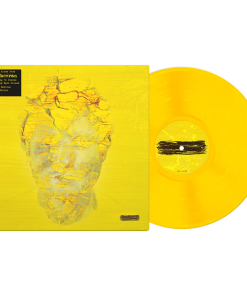The Peyote Dance: Vinyl 2LP Soundwalk Collective feat. Patti Smith
$ 23,99 $ 14,39
The Peyote Dance is the first in a triptych of albums to be released by Bella Union over the next year titled The Perfect Vision, which take their inspiration from the writings of three emblematic French poets: Antonin Artaud, Arthur Rimbaud and René Daumal, and their necessity to travel to different lands to acquire a new vision and perspective on themselves and artworks. Perhaps a perfect vision, it is one that allowed them to transcend forms and borders, both physical and mental. Recorded in the Sierra Tarahumara of Mexico, Abyssinian valley of Ethiopia, and Himalayan Summit of India respectively, the central idea is that each landscape holds sleeping memories that are the witness of human passage. Each album retraces the poets’ footsteps, channelled through on-location recorded soundscapes and musicalities, with Patti Smith revisiting the words that have been inspired by the landscapes. The triptych marks a new chapter in the collaboration between Soundwalk Collective and Patti Smith, who first worked together on Killer Road in 2016.
The Peyote Dance focuses on a brief part of Antonin Artaud’s life, when he travelled to Mexico City in early 1936 to deliver a series of lectures at the University of Mexico on topics including Surrealism, Marxism and theatre. In the summer, he travelled by train towards the Chihuahua region, and saddled by horse to the Tarahumara mountains with the help of a mestizo guide, which the album’s opening track, recited by Gael Garcia Bernal, evokes. Artaud was drawn to the story of the Rarámuri: Native Indian people who live in the Norogachi region of Mexico’s Copper Canyon, the Sierra Tarahumara. One of Artaud’s goals was to find a Peyote shaman who could heal him; allowing him to recover from an opioid addiction. During his stay, encountering the Rarámuri Indians and Peyote shamans of Tarahumara, and engaging in ceremonies, Artaudhad a transcendental experience which resulted in the book The Peyote Dance.
For the eponymous album, Soundwalk Collective and Patti Smith revisited writings from the book, and other texts written after Artaud’s return to France, where he remained in a mental asylum in Rodez undergoing electric shock therapy. During this dark period, the encounter with the Rarámuri stayed with him as his last significant, happy experience. The final track on the album, is a poem written by Patti Smith in homage to Artaud’s last hours in Ivry.
The album’s sonic method originates in the idea of following Artaud’s trace and returning to the village and cave where he lived. Gathering stones, sand, leaves, and many instruments such as violins and drums that the Rarámuri made themselves, the artists were able to awaken the landscape’s sleeping memories and uncover the space’s sonic grammar. Hearing the wind blowing through the valley, or entering a cave, one will find a specific silence or resonance. “Taking peyote in those regions, you have the feeling that everything is communicating with you as it was for Artaud – nothing has changed” says Stéphan Crasneanscki, the founder of Soundwalk Collective who travelled to the Sierra Tarahumara to record on-site. “On an atomic level, there is no separation between you and any other organism: trees, leaves, flowers, but also stones and sand. There is no duality. Everything is embedded, everything has a soul, and the soul is timeless. We are not alone. These sonic spaces are pre-existing to us and will exist after us, to be able to listen to them is an act of presence.”
Listening, reading and improvising to the tracks in the New York studio allowed Smith to channel Artaud’s spirit. “The poets enter the bloodstream, they enter the cells. For a moment, one is Artaud,” Smith says of becoming a conduit for the poet to speak through her, echoing the raw energy of the early punk scene. “You can’t ask for it, you can’t buy it, you can’t take drugs for it to be authentic. It just has to happen, you have to be chosen as well as choose.” The energy of his last poems reverberates and cannot be silenced, Smith says of The Peyote Dance. “We understand that this work and the artist are not dead, they find life in recording them.” The enduring power of Artaud’s text lies in its uncomfortable nature: 80 years after it has been written, it remains a disturbing, raw, explosive and trance-like chronicle of what it is to be alive.
Fast Delivery and Professional Packaging
Our long-standing relationship with UPS FedEx DHL and other carriers around the world gives us the ability to provide various shipping options. Our warehouse personnel will pack all goods to our exacting requirements. Your goods will go through an extensive inspection and will be securely secured prior to being shipped. Every day we ship thousands of packages to clients from all over the world. This is a sign of our determination to be the largest online retailer in the world. There are distribution centers and warehouses in Europe and the USA.
Orders that contain more than 1 item are assigned processing periods in accordance with the item.
Prior to shipment, all purchased items will be thoroughly inspected. The majority of orders are shipped within 48 hrs. Delivery is expected to take between 3 and 7 days.
Returns
The stock is dynamic and we do not completely manage it because multiple parties are involved, which includes our factory and warehouse. The actual stock can fluctuate at any time. It's possible that the stock may run out after your order has been processed.
Our policy lasts for 30 days. Unfortunately, if thirty days have passed from the date you purchased the item, we will not be able to offer you a return or exchange.
The item should not be used, and it must be in the original packaging. The item should be in the original packaging.
Related products
Vinyl LP
Vinyl LP
Vinyl LP
Vinyl LP
Vinyl LP
Vinyl LP
Vinyl LP







































